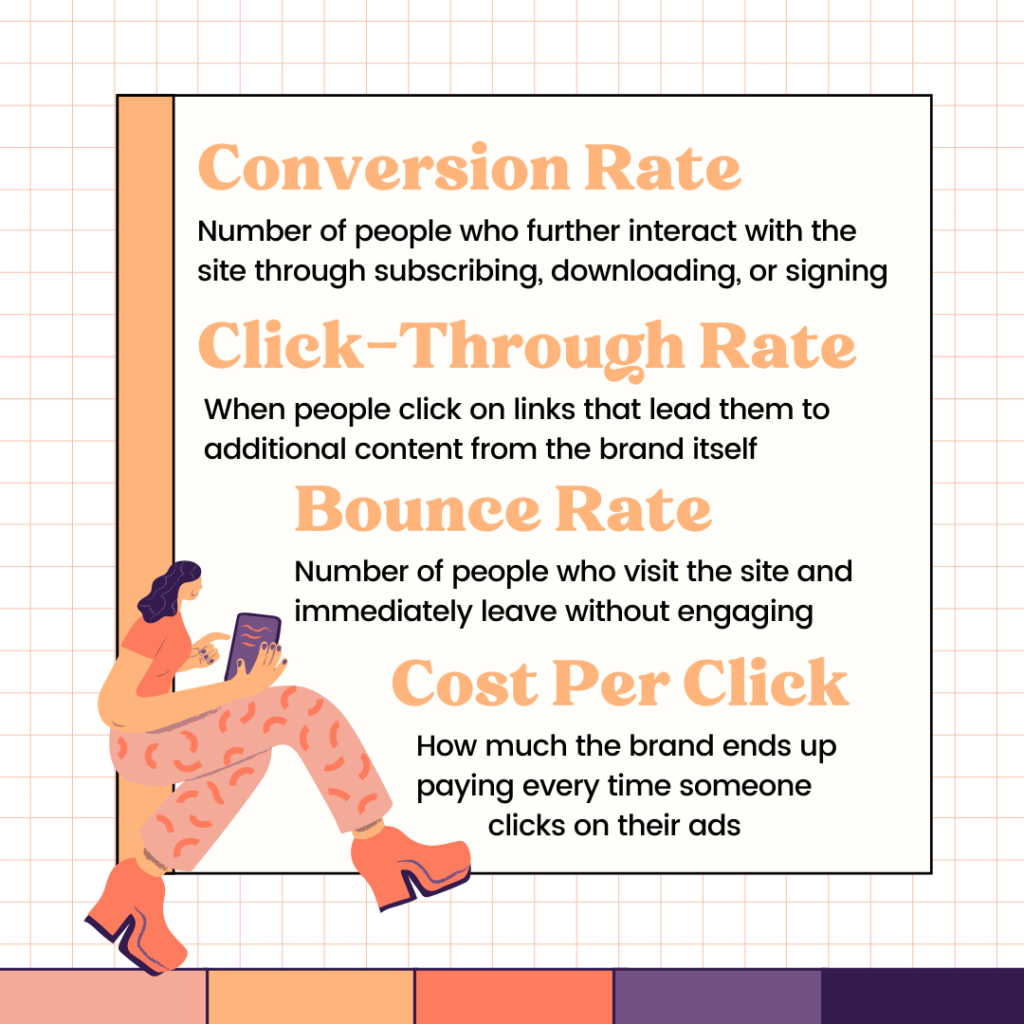
It seems like every other week there’s a new trend or viral video going around. A few years ago though, this phenomenon wasn’t as commonplace as it is in our online space today. Marketers have come to use this to their advantage especially when they want their brand to pop off and become the new hit thing before their 15 minutes of fame are up. We’re led to question though— what does it take to become viral, and are there ways that we can measure the success of our online presence? This is where social media metrics come in.
What Do Social Media Metrics Mean?
There are fundamental terms that would help us understand what we’re striving for instead of just blindly chasing the numbers. These can be broken down into three categories- awareness, engagement, and conversion.
Awareness Metrics
Awareness metrics give us an idea about the number of people who know that our brand exists, and who could potentially become our consumers. Brand Awareness is how much attention the brand is getting on each of its social media platforms over a period of time. Audience Growth Rate is how fast the brand gains followers, especially compared to its competitors. These are important to note because they give a visual representation of how many people’s screens the brand has appeared on, and how the brand has placed itself in the consumer’s online journey.
Engagement Metrics
Engagement metrics tell us how consumers interact with the brand’s content. Applause Rate is when someone likes or favorites the post. This gives an idea of what kind of content your audience wants to see. Average Engagement Rate is the number of likes, shares, and comments on the post in contrast to the number of followers the brand has. This tells us what kind of content the audience can more easily relate and interact with. Virality Rate is the number of shares a post gets relative to the impressions during a certain amount of time. This tells us whether or not the audience finds enough value in the content to share it with others. These help the brand gauge what kind of content their audience and potential consumers would continuously want to see.
Conversion Metrics
Lastly, conversion metrics illustrate the effectiveness of posts and different content released on various social media platforms. Conversion Rate is the number of people who further interact with the site in the form of subscribing, downloading, or signing. Click-Through Rate (CTR) is when people click on links that lead them to additional content from the brand itself. Bounce Rate is the number of people who visit the site and immediately leave without engaging in any way. Cost Per Click (CPC) is how much the brand ends up paying every time someone clicks on their advertisement. These show how many people want to take the next step in their customer journey and further engage with the brand.
Metrics Contextualized in Campaigns

Greenwich (released May 2021): ‘Di Mahal, Tulad Mo
Filipinos have an undeniable penchant for love stories. Whether it’s strong on the kilig or sawi factor, we can’t resist making hugot in every bit of media we consume. A recent success that created quite a buzz for Facebook netizens was Greenwich’s TVC “‘Di Mahal, Tulad Mo”. The ad took a comedic approach in expressing heartbreak, allowing the viewers to also feel giddy with the protagonist just for the major plot twist to drop. The acting was intentionally exaggerated but the heartbreak was effectively communicated by the witty tagline “‘Di Mahal, Tulad Mo, which was constantly repeated in a sarcastic tone just to add more salt to the wound. The ad transformed its call to action of availing its cheap delivery into an introspective reflection of our sawi hearts.
It successfully banked on the element of hugot and allowed the audience to appreciate the brand without the product being shoved in their faces. It was obviously a pizza delivery ad, but the humorous strength of the story and witty tagline drew in over 659,000 views, 8,700 reactions, and nearly 900 comments just four days after its initial release on the Greenwich Barkada official Facebook page. Greenwich kept it real and relatable, banking on its barkada vibe to communicate a supposedly painful everyday experience to a story that everyone can look back to and laugh about together.
Nestlé Milo (released November 2016): #BeatEnergyGap
Beyond the visual elements of our favorite ads are iconic taglines and songs that invade our headspaces 24/7. Random jingles and melodic catchphrases make us LSS just after one or two listens. A successful example of this is Milo’s #BeatEnergyGap song, which was released in 2016 and rose to popularity in 2017. Due to its popularity, many versions of the TVC were released and elements of the ads were featured all over social media. The simple, repetitive song promoted a very straightforward message that Milo was the solution to “beat that energy gap”. And yet, this song remains iconic for Milo and non-Milo drinkers alike.
This successful campaign made use of modern pop music elements that appealed to the younger viewers. Simply put, it was also just catchy and fun. Milo connected with its consumers by mirroring its youthful, energetic, and upbeat image. They related with young people through enjoyable music and easy-to-follow “Champ Moves” (as Milo calls it). Nestlé Philippines’ published a total of five #BeatEnergyGap ads published on their official Youtube channel. These garnered an impressive cumulative view count of around 36.1 million, the highest of which tallying 20 million on its own.
Bench (Release February 2018): How long can you keep a secret?
Feeling afraid to live our truth, especially when that truth isn’t widely accepted, has always led us to keep that part of ourselves hidden even from those that we love. We often use the phrase “I see you,” when we want people to feel like we acknowledge that they exist, and accept them for who they are, but when others choose to hide this from us, what other possible means can we affirm them?
Bench released a commercial called “How long can you keep a secret?” This short portrays the story of a closeted son and how the use of this Bench fragrance helped in his coming out to his father. The story ends with a very meaningful note that says “Nak, Amoy kita. Love you!” The video had over a total of 2.7 million views, with 57 thousand likes and 2.4 thousand comments. These kinds of relatable stories resonate with viewers and help them gain a sense of familiarity. Ultimately, Bench showed how their fragrance can make you feel “seen” and give someone a sense of pride in expressing who they really are.
Social Media Metrics Moving Forward
Gauging your brand’s success in social media is a tricky science and art. We have many tools that can point to precise social media metrics. These enable us to analyze helpful numbers that provide snapshots on how we’re performing. These orient us with engagement and conversion levels, and how one click or share can possibly translate into something value-adding for our growing brands. However, in navigating the numbers, we have to be wary—what do all these metrics actually mean?
The best way to analyze our metrics is to evaluate the alignment of an execution with our intended purpose. Sure, our may quirky video ad garnered thousands of shares but it just isn’t enough. If our objective was to increase sales and our sales are still stagnant, how do we assess success from here? Did we actually gain something that was worth our time, effort, and resources?
Now, what’s the bottom line? Stay authentic. Organic engagements are still the winners in the digital marketing arena. If your brand can naturally connect with people, you don’t have to hard-sell the value you deliver. People will willingly want to know more. Hopefully, you can build customer relationships that are personal and meaningful. Authenticity can still entail a lot of hard work even if it’s supposed to come off as “effortless”. Therefore, we have to listen and understand, then keep trying until we fully capture people’s genuine stories.







Pingback: When Social Media Metrics are a Measure of Love - The Digital Native Project
Pingback: K-Drama Fans are Eternally Grateful for Social Media!
Pingback: Digital Marketing for Beginners: Five quick Tips From Shounen Anime